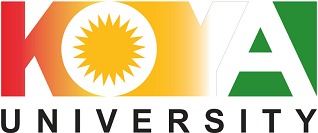Body Language in the Poetry of Several Kurdish Poets
A Case Study of Abdulla Pashew, Latif Halmat, and Kajal Ahmad
DOI:
https://doi.org/10.14500/kujhss.v8n2y2025.pp154-169Keywords:
Body Language, Poetry, Hand, Eyes, FaceAbstract
Language is one of the fundamental principles of textual structure, particularly in poetry. It is subject to various criteria depending on the psychological state being expressed. Both linguistic and non-linguistic expressions are directly related to the human mind. This research explores the role of body language in expressing feelings and thoughts in poetry and how physical movements can become a silent symbol for the deep connection between individuals. Body language invites the reader to interpret bodily gestures in a way that transcends a specific and tangible meaning. This perspective can lend a sense of mystery to the poem, which may be reflected symbolically, emotionally, or even spiritually. In poetry, body language plays a crucial role and becomes a significant part of poetic aesthetics. This study highlights the ability of several poets to use body language, including (Kajal Ahmad, Abdulla Pashew, Latif Halmat, Faraidun Abdul Barznji, and Salih Bechar). A descriptive analysis of their poems was conducted, and a comprehensive statistical survey on the use of body language was carried out using samples from their poetry collections. It was revealed that the eye is a significant source of body language for every poet, followed by the mouth, lips, and face, and then the neck, hands, wrists, and shoulders, respectively. The study consists of two parts: the first part discusses the theoretical aspects of body language, and the second part discusses body language in poetry, presenting its psychological effects and analyses.
Downloads
References
ئهحمهد، شنه ئهبوبهكر (2008) زمانی جهسته، توێژینهوهیهكی وهسفی مهیدانییه، نامهی ماستهر، كۆلیژی زمان، زانكۆی سهڵاحهددین.
بێچار، ساڵح (2019) دیوانی ساڵح بێچار، بهرگی یهكهم، چاپی یهكهم، سلێمانی، كوردستان.
بەرزنجی، فەرەیدوون عەبدول(٢٠١٨)، دیوانی فەرەیدوون عەبدول بەرزنجی، سلێمانی، کتێبخانەی یادگار.
پهشێو١، عهبدوڵڵا)2008( پشت لهنهواو ڕوو لهکڕێوه شیعری 1965-1979، چاپی سێیهم، ههولێر، چاپخانهی هێڤی.
پهشێو٢، عهبدوڵڵا)200( ههسپم ههورهو ڕکێفم چیا شیعری 1980-2005، چاپی سێیهم،ههولێر، چاپخانهی هێڤی.
الخولي، محمد علي(1982) معجم علم اللغه النظري، ط1، بيڕوت، ساحه الرياض الصلح.
دزهيى، عهبدولواحيد موشير ( 2014) زمانهوانيى دهرونى، ههولێر، ناوهندى ئاوێر بۆ چاپ و بڵاوكردنهوه.
دزهيى، عهبدولواحيد موشير( 2015) زمان و كهسايهتى، ههولێر، ناوهندى ئاوێر بۆ چاپ و بڵاوكردنهوه.
ڕۆبهرت ئێڵ، وايتسايد(2007) زمانى ڕوخسار، وهرگێرانى له ئينگليزييهوه: مينه، له بڵاوكراوهكانى كۆمپانياى ئاوێنه.
زەنگەنە، مستەفا (٢٠٠٢) ڕەنگ لە زمانی کوردیدا- لێکۆڵینەوەیەکی لێکسیکی سیمانتیکییە، زنجیرەی بڵاوکراوەکانی گۆڤاری ئاسۆی پەروەردەیی، ژمارە ٩، چاپی یەکەم، هەولێر، چاپخانەی وەزارەتی پەروەردە.
سهمهد، مهريوان ئهسعهد (2021) شيكردنهوهى كرده قسهييهكان له دهربڕينه نازمانييهكان (زمانى جهسته)، نامهى ماستهر، فهكهڵتيى پهڕوهرده، زانكۆى كۆيه.
صالح، پەروهر عبدالرحمن (2014) ههندێ لايهنى كۆمهڵايهتى پڕاگماتيكس، زمانی بواری پزیشكی به نمونه، نامهى ماستهر، زانكۆى سهڵاحهددين، ههولێر، كۆليژى زمان،.
عبدالاحد غیبی، مهین حاجی زادە، شهلا حیدری (٢٠٢١) توظیف لغة الجسد وغایتها في اشعار الحب عند بدر شاکر السیاب، اضاءات نقدیة، السنة ١١، العدد ٤١.
کەژاڵ ئەحمەد (١٩٩٩) وتەکانی وتن، سلێمانی.
__. (٢٠٢٠) زمانی باڵندەم دەزانی، سلێمانی.
گۆران، محەمەدی مەلا کەریم (١٩٨٠) دیوانی گۆران، بەغدا، چاپخانەی کۆڕی زانیاری عێراق.
قادر، كاروان عومهر(2016) ڕێزمانی بینراو له زمانی بینراودا(وێنهكاریی پهروهردهیی وهك نموونه)، گۆڤاری زانكۆی كۆیه بۆ زانسته مرۆڤایهتی و كۆمهڵایهتییهكان، ژماره(38).
مەدهۆش، محەمەد عەلی (١٩٧٦) دڵی کچان، بەغدا.
مينه، محهمهد ئهمين حسين (2004) زمانى جهسته، پهيوهندييه گۆنهكراوهكان، ههرێمى كوردستان.
مينه، محهمهد ئهمين حسين (2007) زمانى جهسته درۆ و هێماكانى درۆكردن، سلێمانى، چاپخانهى ئاوێنه.
نالی، مەلا عبدالکریمی مدرس و فاتح عبدالکریم (١٩٧٦) بەغدا، چاپخانەی کۆڕی زانیاری کورد.
الن پيز، ( 2014) زمانى جهسته، و: دانا نادر محهمهد، چاپى سێيهم، سلێمانى، چاپخانهى گهنج.
ههڵمهت، لهتیف(2005) دیوانی لهتیف ههڵمهت، چاپی دووهم، سلێمانی، چاپخانهی شڤان.
وەفایی، موحەممەد سەعید نەجاڕی(ئاسۆ)، (١٣٨٩) سنندج، انتشارات کردستان.
Allan & Barbara Pease, (2004) BODY LANGUAGE, Australia
Davies and Elder, (2004) The Handbook Of Applied Linguistics. USA, Blackwell Publishing,.
Kar, A., & Kar, A. (2017) How to Walk Your Talk: Effective Use of Body Language for Business Professionals. The IUP Journal of Soft Skills, 11, 16.
Portch, Stephen R. (1985) Literature’s Silent Language nonverbal Communication.
REN Zhi-peng, (2014) Body Language in Different Cultures, DAVID PUBLISHING, Vol. 12, No. 12, 1029-1033.
Downloads
Published
How to Cite
Issue
Section
License
Copyright (c) 2025 Nazira S. Mustafa, Hemin A. Shams , Srusht J. Hawez

This work is licensed under a Creative Commons Attribution-NonCommercial-NoDerivatives 4.0 International License.







